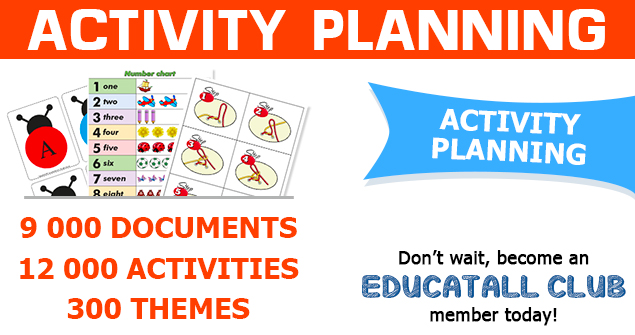Babies and creativity - Part 1
The importance of the creative and exploration process
I would like to begin by stressing the importance of the creative process and not the end result.
Babies will learn much more if we emphasize the creative process instead of worrying about what the craft will look like once it is completed.
An example of a finished product
The Christmas tree and the cotton balls
If you cut a Christmas tree shape out for the child and want him to glue cotton balls on it, you will most likely have to sit next to the child for the activity. You will be tempted to hold the child's hand, pick up a cotton ball, and dip it in the glue with him before gluing it on the tree. Will the child really be the one who will have made the finished product? I don't think this technique allows the child to explore the material. It also limits creativity. Babies are simply too small for this craft!
Let babies explore
It would be much more interesting to let babies explore cotton balls as they please. Even if they do not succeed in gluing them on a tree, at least they will have explored! Provide additional material such as garlands and felt. Let babies experiment as they wish. It will be fun to watch them try to remove sticky cotton balls from their fingers! Babies will take pleasure in exploring and creating their masterpieces...even if in the end, there is only one cotton ball stuck on the tree!
As seen through parents' eyes
It is important to discuss how parents see their children's crafts. Often, parents expect to see a nice finished product. If we have decided to give little ones a chance to explore instead of emphasizing the importance of the finished product, you may want to explain your method to parents. This is a good subject to bring up at the beginning of the year when you meet with parents.
How to help parents understand
Here are a few tricks which can help parents understand the creative process.
Take a picture of their child while he is working on his project. When you give the "craft" to parents to take home, also give them the picture. They will realize how much fun their child had working on his masterpiece.
Another little trick
Write a short sentence or description explaining the child's creative process for each project.
Example 1:
Lisa used a very tiny paintbrush to fill her page. She demonstrated perseverance and patience.
Example 2:
Nathan tore the paper into tiny pieces. This was difficult for him but he persisted and finally succeeded. He enjoyed filling and emptying the small container he had on his table with tiny pieces of paper.
Example 3:
The blue transparent paper fascinated Rose. She placed it in front of her eyes over and over again, laughing.
With these few words, parents can only appreciate their child's crafts more!
Chantal Milette
No element of this text may be copied,
reproduced, distributed, published, translated, downloaded, posted, or
transmitted, in any way, without prior written authorization from
Educatall and the copyright holder. Elements may be posted and/or
downloaded solely for personal and non-commercial use provided no
modifications are made and all notices of intellectual property are
fully shown (name of the author, title of the article, name of the
website, date the text is used and the date of the part in question).

 Home
Home Theme activities
Theme activities
 Babies and toddlers
Babies and toddlers
 Arts and crafts
Arts and crafts
 Science
Science
 Creative recipes
Creative recipes
 Tips and tricks
Tips and tricks
 Special needs
Special needs
 Extra activities
Extra activities
 Educ-TV
Educ-TV
 Newsletter
Newsletter  Online store
Online store Educatall club
Educatall club

